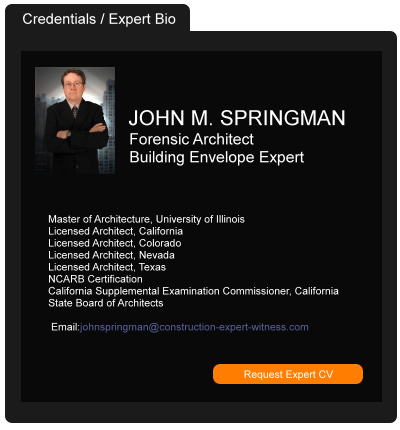A Court-Side Seat: A Poultry Defense, a Houston Highway and a CERCLA Consent Decree that Won’t Budge
March 22, 2021 —
Anthony B. Cavender - Gravel2GavelFebruary saw the usual array of significant environmental decisions and federal regulatory notices.
THE FEDERAL COURTS
U.S. Court of Appeals for the District of Columbia
Luminant Generation v. EPA
The court will be grappling with a difficult venue case governed by the Clean Air Act (42 USC Section 7607(b)). In 2013, the U.S. Court of Appeals for the Fifth Circuit decided the case of Luminant Generation v. EPA (714 F. 3d 841), in which the court upheld the affirmative defenses that were made part of the Texas State Implementation Plan (SIP) and which applied to certain unpermitted emissions from regulated sources during periods of startup, shutdown or malfunction. These defenses were challenged in the Fifth Circuit and were rejected. On the national stage, EPA has been involved in litigation over these affirmative defenses and recently excluded from a “SIP Call” the Texas program, which was carved out. This EPA decision is being challenged in the DC Circuit (see Case number 20-1115),with the State of Texas arguing as an intervenor that any issues involving Texas belong in the Fifth Circuit, and not in the DC Circuit because the Act allows regional issues to be decided in the regional federal courts.
Read the court decisionRead the full story...Reprinted courtesy of
Anthony B. Cavender, PillsburyMr. Cavender may be contacted at
anthony.cavender@pillsburylaw.com
Breaking News: Connecticut Supreme Court Decides Significant Coverage Issues in R.T. Vanderbilt
December 16, 2019 —
Patricia B. Santelle & Ciaran B. Way - White and Williams LLPOn October 4, 2019 (almost two years after granting certification), the Connecticut Supreme Court affirmed the Appellate Court’s rulings on four key coverage issues in R.T. Vanderbilt Company v. Hartford Accident & Indemnity Company, et al. The coverage dispute in Vanderbilt concerns underlying actions alleging that talc and silica mined and sold by the insured contained asbestos and/or caused asbestos-related disease. The case has been proceeding in phases, two of which have been tried to date, resulting in the matter on appeal.
(1) “Continuous Trigger” Theory of Coverage Applies: The Court affirmed and adopted the Appellate Court’s opinion applying a “continuous trigger” for the underlying claims at issue, and agreed that the trial court properly excluded testimony from medical experts the insurers had proffered to prove that the asbestos disease process did not support a continuous trigger.
(2) The “Unavailability of Insurance” Exception to Time-on-Risk Pro Rata Allocation Applies: The Court affirmed and adopted the Appellate Court’s ruling that (a) damages and defense costs should not be allocated to any period in which insurance was “unavailable” in the market, (b) the insurers bear the burden of proving that coverage for asbestos liabilities was available to the policyholder after the date asbestos exclusions were added to the policies and (c) the insured bears the burden of proving that it was unable to obtain asbestos coverage prior to 1986 (when such insurance was generally available). The Appellate Court recognized that, in certain circumstances, there could be an “equitable exception” to the unavailability rule if the insured continued to manufacture products containing asbestos after 1986 with the knowledge that such products were hazardous and uninsurable (circumstances which the court found were not present in this case).
Reprinted courtesy of
Patricia B. Santelle, White and Williams LLP and
Ciaran B. Way, White and Williams LLP
Ms. Santelle may be contacted at santellep@whiteandwilliams.com
Ms. Way may be contacted at wayc@whiteandwilliams.com
Read the court decisionRead the full story...Reprinted courtesy of
Fed. Judge Blocks Release of Records on FIU Bridge Collapse, Citing NTSB Investigation
October 23, 2018 —
Miami Herald - Engineering News-RecordOct. 05 --A federal judge Friday blocked the release of documents that could shed light on why a busy road outside Miami was not shut down before a brand-new bridge developing severe cracks collapsed and killed six people.
Judge William Stafford said the National Transportation Safety Board , the federal agency investigating the Florida International University bridge disaster, "was exercising its valid federal regulatory authority" in keeping the documents confidential from the media.
Read the court decisionRead the full story...Reprinted courtesy of
Engineering News-RecordENR may be contacted at
ENR.com@bnpmedia.com
Replevin Actions: What You Should Know
November 08, 2021 —
Craig H. O'Neill - White and Williams LLPA contractor client of White and Williams recently found itself in a prickly situation. They had default terminated a subcontractor on a major commercial project and withheld payment to that subcontractor on an outstanding invoice as permitted under the terms of the subcontract until the project was completed. Clearly irate over being terminated, the subcontractor walked-off of the project with thousands of dollars’ worth of project materials and equipment that had been paid for by the owner. While on some projects this may amount to nothing more than an annoyance or inconvenience, in this case it was a significant problem because some of the wrongfully removed materials were custom manufactured overseas and not easily replaceable. The client therefore needed to take immediate action to retrieve the stolen materials so that the project would not be delayed. Specifically, it needed to file a replevin action against the subcontractor.
A replevin action is a little known but powerful area of the law. In its simplest terms, replevin is a procedure whereby seized goods may be provisionally restored to their owner pending the outcome of an action to determine the rights of the parties concerned. The requirements of a replevin action differ by jurisdiction. For example, in Pennsylvania, the Rules of Civil Procedure devote an entire section to replevin actions and spell out in precise detail the steps that must be taken. While you should be sure to strictly comply with the rules in your jurisdiction, here are a few general points to keep in mind:
- Where to File: A replevin action is typically commenced by filing a complaint in the appropriate jurisdiction. Generally speaking, it is best to file the action in the jurisdiction where the improperly seized materials are being held. If that location is unknown, you can also typically file the action in the jurisdiction where the project is located.
Read the court decisionRead the full story...Reprinted courtesy of
Craig H. O'Neill, White and Williams LLPMr. O'Neill may be contacted at
oneillc@whiteandwilliams.com
Congratulations to Haight Attorneys Selected for the 2024 Edition of Best Lawyers and Best Lawyers: Ones to Watch
September 11, 2023 —
Haight Brown & Bonesteel LLPBest Lawyers and Best Lawyers: Ones to Watch – 2024 Edition
Best Lawyers 2024 Edition
- Bruce Cleeland
- Peter Dubrawski
- Denis Moriarty
- Theodore Penny
Best Lawyers: Ones to Watch 2024 Edition
- Frances Brower
- Kyle DiNicola
- Kristian Moriarty
- Arezoo Jamshidi
- Josh Maltzer
- Philip McDermott
- Patrick McIntyre
- Annette Mijanovic
- Kathleen Moriarty
- Bethsaida Obra-White
Read the court decisionRead the full story...Reprinted courtesy of
Haight Brown & Bonesteel LLP
In Florida, Component Parts of an Improvement to Real Property are Subject to the Statute of Repose for Products Liability Claims
December 02, 2015 —
Michael L. DeBona – White and Williams LLPIn Dominguez v. Hayward Industries, Inc., Certified Gunite Company d/b/a Custom Pools, and John M. Pieklo, — So.3d —-, 2015 WL 5438782 (3d DCA Sept. 16, 2015), the District Court of Appeal of Florida, Third District, discussed whether products liability claims related to a pool filter, a component part of a pool system, were subject to Florida’s twelve-year products liability statute of repose, section 95.031, Florida Statutes. The court held that a pool filter does not constitute an improvement to real property and, thus, the plaintiffs’ claims were subject to the statute of repose.
Background Facts
Ryan and Jessica Dominguez had a pool installed at their house; the delivery and installation of the pool and its filter were completed on December 20, 1999. Over twelve years later – on November 17, 2012 – the pool filter exploded, causing Mr. Dominguez a severe head injury. Mr. Dominguez and his wife brought a products liability action against, among others, the pool filter manufacturer and distributor, Hayward Industries, Inc., and the installer of the pool and intermediate distributor of the pool filter, Certified Gunite Company.
Read the court decisionRead the full story...Reprinted courtesy of
Michael L. DeBona, White and Williams LLPMr. DeBona may be contacted at
debonam@whiteandwilliams.com
Florida trigger
August 04, 2011 —
CDCoverage.comIn Mid-Continent Casualty Co. v. Siena Home Corp., No. 5:08-CV-385-Oc-10GJK (M.D. Fla. July 8, 2011), insured residential real estate developer Siena was sued by homeowners seeking damages for moisture penetration property damage resulting from exterior wall construction defects. Siena’s CGL insurer Mid-Continent filed suit seeking a declaratory judgment of no duty to defend or indemnify in part on the basis that the alleged “property damage” did not manifest during the Mid-Continent policy period.
�Read the full story…
�Reprinted courtesy of CDCoverage.com
Read the court decisionRead the full story...Reprinted courtesy of
Building Amid the COVID Challenge
November 29, 2021 —
Pillsbury's Construction & Real Estate Law Team - Gravel2Gavel Construction & Real Estate Law BlogAt longtime client Clark Construction, Dave Beck took charge of risk management just weeks before the COVID-19 pandemic struck.
David Beck made a big career move last year—just how big, he soon learned. In January 2020, Beck became division president for risk management at Clark Construction Group, a major national builder based in Bethesda, Md., with more than 4,000 employees across the U.S. In business since 1906, Clark has grown from a small, local excavator into one of the country’s best-known providers of construction services.
Beck took up his position at Clark shortly before COVID-19 changed life for everyone. We recently reached out to him to learn how his role has evolved since then.
Read the court decisionRead the full story...Reprinted courtesy of
Pillsbury's Construction & Real Estate Law Team


































































